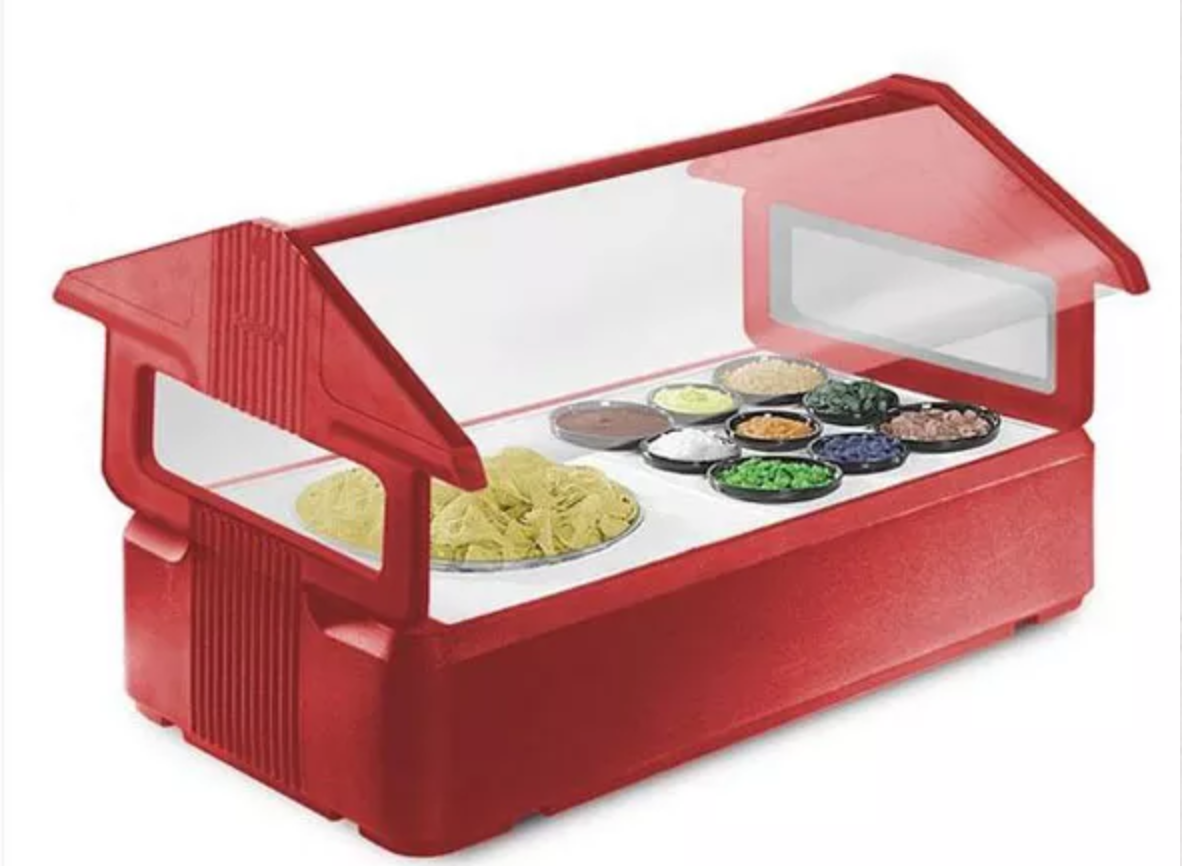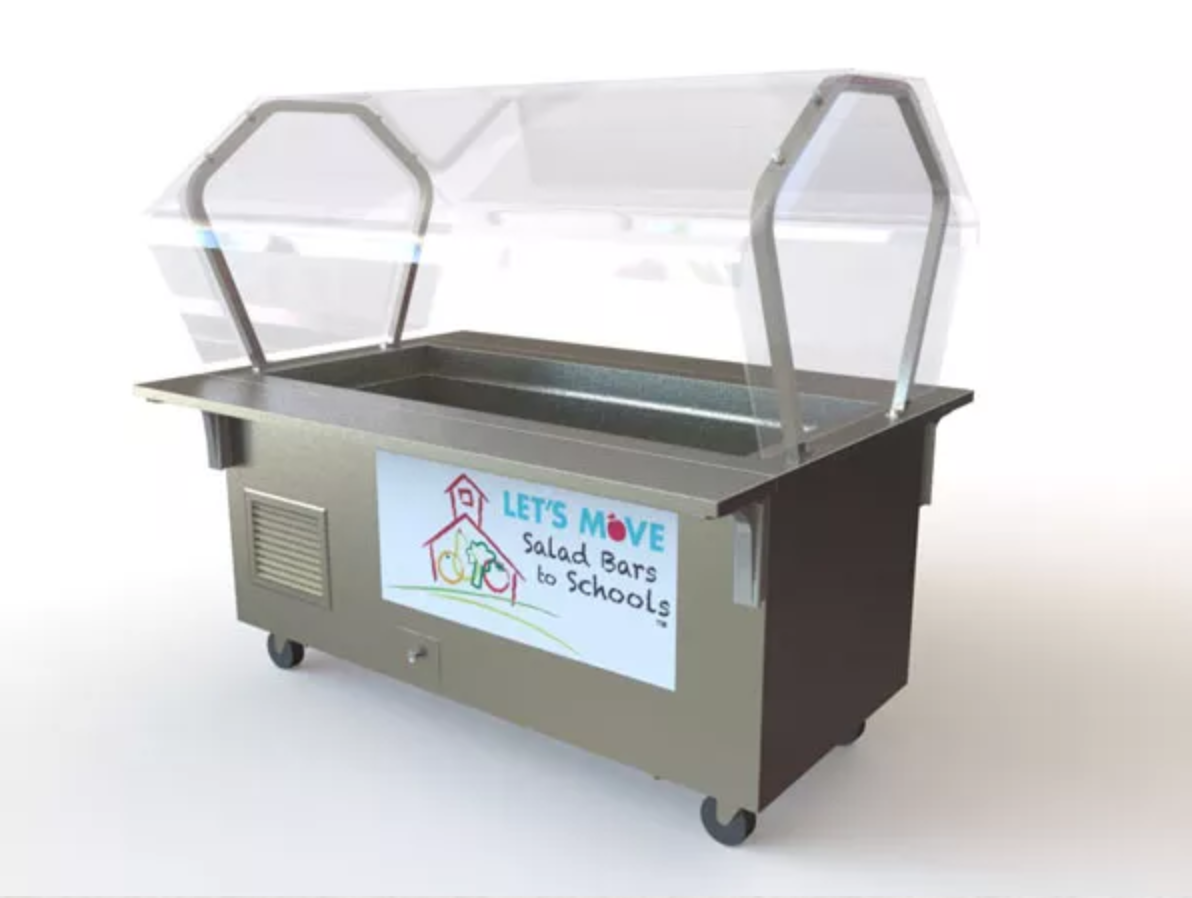
Salad Bars: Assessment & Planning
Once a school district establishes the goal of incorporating salad bars into their school lunch program, you should perform an assessment and plan for each school’s assets and challenges for implementation. Following a site assessment, assess on the larger scale of department- and district-wide assets and challenges. Planning for the large and small details of salad bar implementation ensures that salad bars will become a permanent fixture of your school dining landscape.

Salad Bars: Assessment & Planning
Once a school district establishes the goal of incorporating salad bars into their school lunch program, you should perform an assessment and plan for each school’s assets and challenges for implementation. Following a site assessment, assess on the larger scale of department- and district-wide assets and challenges. Planning for the large and small details of salad bar implementation ensures that salad bars will become a permanent fixture of your school dining landscape.
To help you get started, we’ve created a Salad Bar Site Assessment Tool [Spanish Version] to help determine your district’s requirements for salad bar implementation. The assessment takes into account: site data, district wide impact areas, budget planning, and timeline action checklists.
Key data collection for each school includes
- School administration details
- Grades served
- Meal period details
- Average daily participation
- Other programs (e.g., breakfast in the classroom or fresh fruit and vegetable program)
- Site type (satellite, base, or production kitchen location)
- Staffing details
- Kitchen, service area, and cafeteria layout
- Delivery access
- Current smallwares inventory
- Current refrigeration and storage assets
The larger, system-wide operations considerations for planning include
- Who is the district’s primary produce supplier?
- How frequently is produce delivered?
- Is produce delivered directly to the site or to a central facility?
- How are sites ordering produce now?
- Is there significant aged inventory of canned or frozen vegetables that needs to be used?
- What is the level of expertise of the team with handling produce?
- Do you currently budget time for staff training and development?
- Does your department have a HACCP plan and are your standard operating procedures reviewed and updated annually?
- Is there a minimum of one person at each school site who has a current Serv Safe manager’s certification?
- Do you have an active relationship with your local health authority?
- Do you have support from administration, teachers, and staff for salad bar implementation?
- Are parents on your side? Can the food service department count on parents to support salad bars by having their children eat school lunch more frequently?
Evaluating Labor Requirements
It’s a common assumption that salad bars require more labor than other models, but only a critical analysis of the labor hours can either verify or disprove this theory. Once assessed, districts often find that there are adequate hours and people, and that satisfying salad bar labor requirements can be achieved by shifting the tasks and times of the existing team.
When assessing labor, consider the following to determine the best course of action:
- Skill sets of existing site teams
- Current site team efficiency
- Current site productivity (use Meals Per Labor Hour Worksheet [Spanish Version] to calculate)
- Team motivation—is the food service staff excited to implement?
- Existing menu assumptions (i.e., what components of the menu will the salad bar replace versus implementing salad bar as an addition to current options?)
- The salad bar menu and layout (i.e., variety and type)
- Average daily participation at site—sheer volume of production needs versus current (use Simple Meal Count Average Daily Participation Worksheet [Spanish Version] to calculate)
- Food preparation models (e.g., product prep at sites, direct delivery of cut product from production kitchens, direct delivery of either pre-cut or uncut product from vendors, etc.)
We also recommend that the salad bar replace hot-line service of fruit and vegetables. Likewise, the salad bar can replace the commonly-used cupping/packaging of fruits, salads, or other vegetables that are part of many menu plans prior to use of a salad bar. As we will discuss later in this guide, a key factor in cost containment is to shift the menu model to rely on the salad bar to fulfill fruit and vegetable requirements.

Budget
Up-front Investment
Given the wide variety of facilities that can be found in a single school district, gathering pertinent data about each location is critical to the planning process. The Salad Bar Site Assessment Tool [Spanish Version] includes a budgeting worksheet to aggregate upfront expenses in one document and present a comprehensive plan to key decision makers.

Budget
Up-front Investment
Given the wide variety of facilities that can be found in a single school district, gathering pertinent data about each location is critical to the planning process. The Salad Bar Site Assessment Tool [Spanish Version] includes a budgeting worksheet to aggregate upfront expenses in one document and present a comprehensive plan to key decision makers.
Many districts use a combination of purchasing, equipment donations, and equipment repurposing in order to f incorporate salad bars in every school. The primary areas of investment are:
- Electricity
- Point-of-Sale mitigation
- Refrigeration
- Salad bar units
- Sinks/plumbing
- Staff training
The Salad Bars to Schools grant program is available to all school districts. We strongly recommend that districts submit an application as soon as possible, as the waitlist can often reach 12 months. The process is easy and can fund one or all of the salad bars for your district. School districts have also acquired funding through state-based projects, local benefactors, grants, and many other funding sources.
Salad Bar Equipment
Here are the most common salad bar types:
Regular Service Line with Cold Wells
Some schools may already have mechanically-cooled wells in their current service line. If the wells have sneeze guards and are designed to allow for self-service, it may be possible to adapt to a salad bar. If the line doesn’t have a sneeze guard, or the guard restricts self-service, it is possible to add a sneeze guard or replace with one that allows self-service. If your line does not have cold wells but includes a long stainless counter of six feet or more, the counter can be cut out so that a mechanical unit can be retrofitted there (provided that adequate electrical power is available or able to be installed). Additionally, if the current line is newer and modular (aka if it’s mobile) with adequate space and power, a cold well module could be integrated in the layout.

Pros
No up-front costs if a school already owns this type of equipment. Gives site personnel control during service. Staff can assist younger children from the service line. May be the best option for small confined service areas where a stand-alone bar is not an option.
Cons
Creates slower lunch lines. Often too high for K-2 students who either cannot reach the product or reach below the sneeze guard, which is unacceptable from a food safety perspective. As a solution, younger grades can be served by staff or an accompanying adult.

Pros
No up-front costs if a school already owns this type of equipment. Gives site personnel control during service. Staff can assist younger children from the service line. May be the best option for small confined service areas where a stand-alone bar is not an option.
Cons
Creates slower lunch lines. Often too high for K-2 students who either cannot reach the product or reach below the sneeze guard, which is unacceptable from a food safety perspective. As a solution, younger grades can be served by staff or an accompanying adult.
Freestanding, Mobile-Insulated Salad Bars
This is by far the least expensive and most common option. Offered in both four-well and five-well configurations, the newest versions of these bars can compress easily to move through doorways, have adjusted height options for elementary self-service, include sneeze guards that meet government requirements, and can hold temperatures of 41 degrees and below for four hours. This improved cold holding allows the use of temperature as a Public Health Control (PHC). (See Cambro’s Temperature Retention Test Results.) The mobility of these bars allows for flexible dining room layouts, which is helpful when considering customer flow through the line. The bars can also multi-task for other meal period; for example, hallway placement for Grab ‘n Go breakfast pick up.
Pros
Fully mobile. Inexpensive. Easy to maintain. May be used as one- or two-sided.
Cons
Requires a freezer to freeze buffet chiller packs, which may not be permitted by some health departments.


Pros
Fully mobile. Inexpensive. Easy to maintain. May be used as one- or two-sided.
Cons
Requires a freezer to freeze buffet chiller packs, which may not be permitted by some health departments.
Table Top Insulated Salad Bars
These are similar to mobile salad bars. The main difference is that they require a table.

Pros
Less expensive and more compact than a wheeled unit. Can be used as either one- or two-sided.
Cons
Does not store well. Height is an issue so tables must be adjustable to attain the appropriate height.

Pros
Less expensive and more compact than a wheeled unit. Can be used as either one- or two-sided.
Cons
Does not store well. Height is an issue so tables must be adjustable to attain the appropriate height.
Freestanding, Mobile, Mechanically-Cooled Salad Bars
Very similar to freestanding insulated salad bars, the mechanically-cooled bars offer the same ability for two-sided service.
Pros
Hold temperature. Easy to clean. Do not require a freezer to keep unit cold.
Cons
Most expensive mobile option. Not as compact as mobile units. Fewer location choices due to electrical needs. Requires floor plug to remove tripping hazards. Some locations will require electrical work to use. Fewer models have height options.


Pros
Hold temperature. Easy to clean. Do not require a freezer to keep unit cold.
Cons
Most expensive mobile option. Not as compact as mobile units. Fewer location choices due to electrical needs. Requires floor plug to remove tripping hazards. Some locations will require electrical work to use. Fewer models have height options.
Regulations
Federal
As many school food professionals know, regulations and compliance issues are abundant.
The most recent USDA Memo “Salad Bars in the National School Lunch Program” from March 2013 clarifies earlier salad bar guidance on key areas, including:
- portion size
- salad bar location
- POS placement
- nutrient analysis
- food safety with regard to serving elementary students
They also acknowledge that state agencies may authorize alternatives to the federal guidance, particularly with regard to placement of the POS. Although this memo was published in 2013, it is still considered the most up-to-date USDA guide.

“USDA encourages the use of salad bars in the school meal programs. We encourage school food authorities (SFAs) to incorporate salad bars into their school food service operations when possible, and to explore other creative options when salad bars are not an option.” –USDA Memo SP 31-2013

“USDA encourages the use of salad bars in the school meal programs. We encourage school food authorities (SFAs) to incorporate salad bars into their school food service operations when possible, and to explore other creative options when salad bars are not an option.” –USDA Memo SP 31-2013
Local Jurisdictions
You’ll want to engage your local health authority when considering implementing salad bars. Most school districts have very active relationships with their local authorities. By coordinating and communicating, you can fine-tune any issues or concerns prior to implementation.
Most commonly, you’ll need to provide a complete salad bar operational plan based on Hazard Analysis and Critical Control Point principles (HACCP). In some cases, only a kitchen equipment plan update will be required.
Salad bars require the handling of fresh foods, many of which are considered PHFs (potentially hazardous foods); examples include tomatoes, melon, and lettuce, as well as protein sources such as chicken, cottage cheese, eggs, and hummus. With proper planning and partnership with local health authorities, any school can safely operate a self-service salad bar.
Recommended Next Topic: Salad Bar Procurement
The most successful programs using salad bars are those that incorporate the salad bar as the primary “go-to” for vegetable side dishes and fruits.
Recommended Next Topic: Salad Bar Procurement
The most successful programs using salad bars are those that incorporate the salad bar as the primary “go-to” for vegetable side dishes and fruits.



